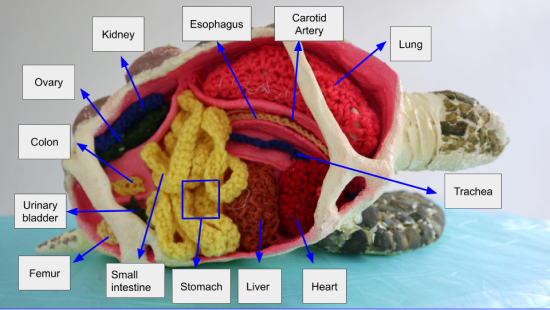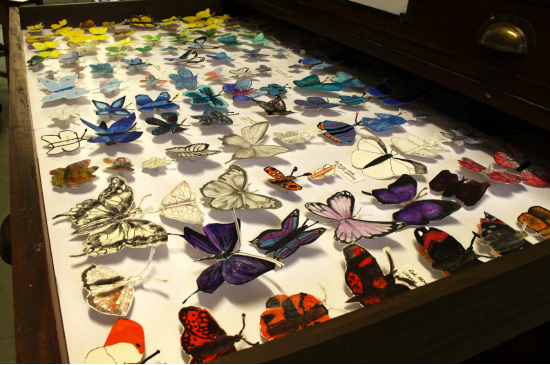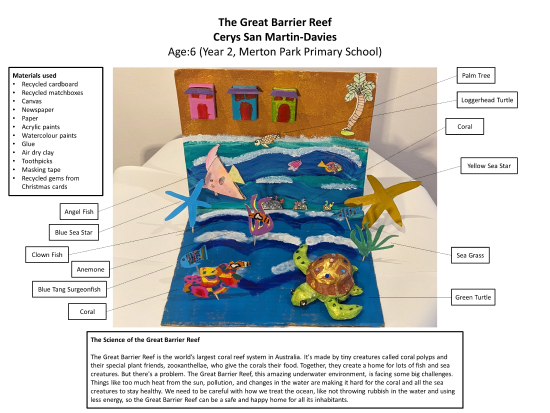News
RSB BioArtAttack3D 2023 competition winners announced
- Details
- 11 March 2024
With over 300 photos of fabulous artworks submitted by the competition’s entrants this year featuring models of birds, arachnids, and forests, the winners have been selected. The competition was open from October 2023 – January 2024.
Winning the Individual category was Aiyara McWilliam (11) from Australia International School, Bangkok with her Anatomy of a Green Sea Turtle. Aiyara made the sculpture using a variety of art-forms, including crochet and papier-mâché, and used a wide range of materials such as acrylic paint, yarn, soft wire mesh, modelling clay, and upcycled materials (bottle caps, yoghurt pots, newspapers, and cardboard).

When asked about winning, Aiyara said: “Winning this competition was unbelievable! I was so happy and proud of myself. At first this project seemed so difficult, but with perseverance it turned out even better than I imagined. Now I feel more confident and determined to do things that seem nearly impossible. I also hope that by seeing my sculpture people will become interested in the wonders of the ocean.”
Aiyara drew on her inspiration from watching nature documentaries, her fascination with the ocean, and her love of art and biology to create her Green Sea Turtle, with the hopes of seeing one in real life one day.
Taking the Group category win was a school group from Moreton Hall, North Shropshire for their Museum Drawer of Butterflies.

Aged 3-14, the pupils created the work using a range of art materials full of different types of butterflies, with everyone having a favourite. The drawer displays the results of their eco-efforts and records the visiting butterflies spotted in a week in the school garden, including Red Admiral, Holly Blue, and Dingy Skipper, having taken inspiration from a trip to the Natural History Museum.
Commenting on the win, teacher Jan Miller said: “Wow, what a surprise! My class has just jumped up and down in excitement, and the art technician! I wish you could see our Head of Biology's beaming face, who taught me the word ‘lepidopterology’ as she studied butterflies for her master’s. Both the Biology and Art departments are thrilled. It was lovely that so many children who took part in making a butterfly feel they have won.”
They embraced the collaborative possibility to involve the whole school and individually they could work with their favourite materials. The children were involved throughout the whole process by helping with the cutting, sorting photographing, and displaying.
The competition judges decided to award a Special Commendation prize to Cerys San Martin-Davies (6) from Merton Park Primary School, London for a depiction of the Great Barrier Reef.

A variety of recycled materials (including cardboard, matchboxes, and gems from Christmas cards) and paints were used to make the piece come to life. Featuring coral, sea grass, anemone, turtles, and fish, the artwork showcases the importance of this ecosystem to its various inhabitants, and the destructive effects that plastic pollution and the rising of sea temperatures are having on it.
Cerys San Martin-Davies commented: “I decided on the Great Barrier Reef as my subject because I had heard about it in an episode of Octonauts and we also did some work in school about plastic pollution in the sea. I'm also really interested in sea creatures and I had been working on some of the pieces (the sea turtle sculpture and the beach scene) in my weekly art class. When I heard I had been highly commended, I felt really happy and proud.”
If you’re feeling inspired, or know someone who would want to enter, the competition will be running again later in 2024.
In the meantime, BioArtAttack2D has opened for entries of two-dimensional artworks.

